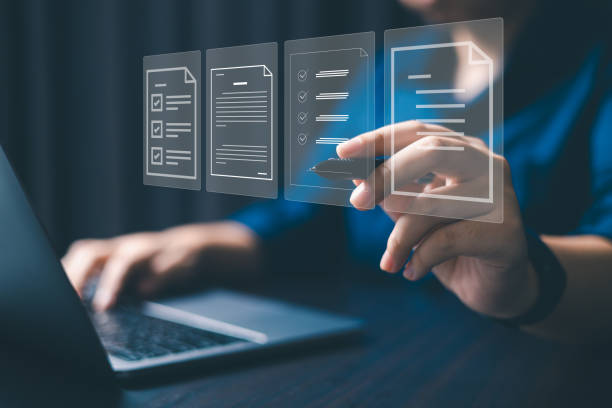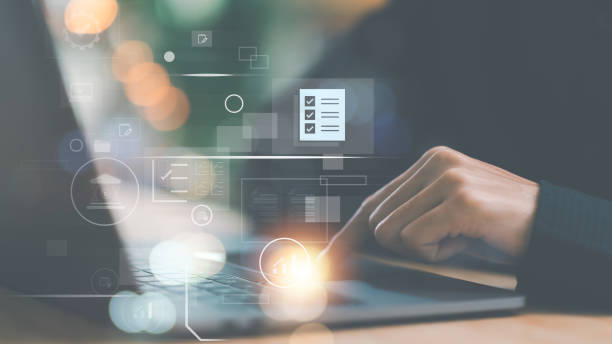Introduction to On-Page SEO and Its Importance

In today’s highly competitive web world, an online presence is not achieved merely by having a good website; it also requires visibility and reaching the target audience.
This is where #On-Page SEO, also known as On-Page SEO, plays a pivotal role.
This specialized process involves optimizing various elements within your website for higher rankings in search engines.
A powerful #On-Page SEO strategy helps search engines better understand your content, which in turn leads to improved site visibility and increased organic traffic.
The main goal of On-Page SEO is to create a seamless user experience along with clear signals for search engine algorithms.
Without addressing On-Page SEO, even the best content might get lost among a flood of information and never reach its audience.
This is a vital and educational part of any digital marketing strategy.
The importance of On-Page SEO goes beyond mere ranking. It also helps in improving the overall site structure, increasing loading speed, and optimizing for mobile.
When a user reaches your site through a search, they expect a smooth and efficient experience, and On-Page SEO directly influences this experience.
From an analytical perspective, the stronger your site is in terms of On-Page SEO, the lower the bounce rate and the longer users stay on the site, which are positive signals for search engines.
This topic is not only a guide for technical site improvement but also helps you produce content tailored to the real needs of users.
Engaging content that addresses users’ concerns, combined with proper On-Page SEO implementation, can make a significant difference in your site’s performance.
In fact, On-Page SEO is the foundation for the success of any website in achieving top rankings in search results.
It is a long-term investment that yields significant returns and gradually increases your site’s credibility and authority in the online space.
This process requires specialized knowledge and continuous updates with changes in search algorithms.
Research shows that 80% of customers trust companies with professional websites more. Does your current site attract this trust?
With Rasaweb’s corporate website design services, solve the problem of customer mistrust and a weak online image forever!
✅ Create a professional image and increase customer trust
✅ Attract more sales leads and grow your business
⚡ Get free consultation
Keywords and Their Crucial Role in On-Page Optimization
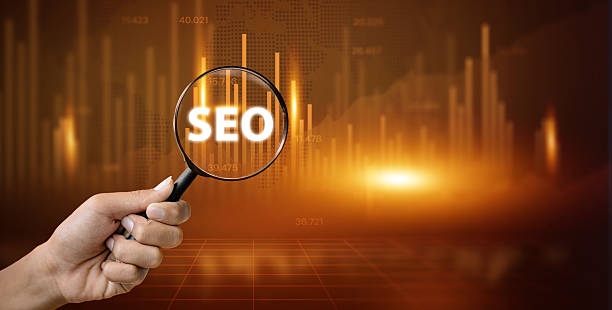
The correct selection and use of #keywords are the cornerstone of any successful #On-Page SEO strategy.
These words and phrases are the bridge between what users search for and your content.
The #keyword research process involves not only finding high-volume search terms but also understanding the User Intent behind each search.
Is the user looking for information (informational search), purchasing a product (commercial search), or navigating to a specific site (navigational search)? Answering these questions helps you tailor your content precisely to user needs.
Specialized use of keywords should not mean “Keyword Stuffing”, but rather should be placed naturally and purposefully in the text, headings, and HTML tags.
After research, the next step is the strategic placement of keywords in various on-page elements.
This includes the page title (Title Tag), meta description (Meta Description), H1 to H6 headings, main text, and even image filenames.
From an educational and guidance perspective, it is recommended that the main keyword be repeated logically in the first paragraph of the content and throughout the text.
Also, using Latent Semantic Indexing (LSI) Keywords helps search engines understand your content’s topic more comprehensively.
For example, if the main keyword is “flight ticket booking”, LSI keywords could include “domestic flight”, “ticket price”, “travel agency”, and “air travel”.
An analytical approach shows you which keywords bring the most relevant traffic to your site and which ones need further optimization.
Your content should be engaging and useful not only for search engines but primarily for the reader.
Optimizing Title Tag and Meta Description
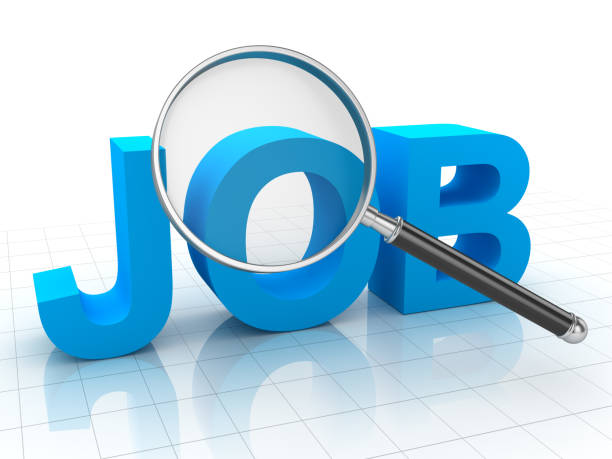
The page title (Title Tag) and meta description (Meta Description) are two vital elements in #On-Page SEO that play a key role in attracting clicks from Search Engine Results Pages (SERP).
The Title Tag is the title displayed in the browser tab and as the main heading in search results.
Optimizing it helps search engines understand the main topic of your page.
This element should include your main #keyword and also be attractive and convincing for users to click on your link.
The meta description is a short summary of the page content displayed below the title in the SERP.
Although the meta description does not directly affect ranking, it significantly impacts the Click-Through Rate (CTR) and can dramatically increase your organic traffic.
For effective optimization, the Title Tag length should be around 50 to 60 characters and the meta description between 150 to 160 characters to be fully displayed in search results.
This is an educational recommendation and guideline.
The meta description content should be engaging and give users a reason to click on your link.
You can use relevant keywords and a Call-to-Action within it.
Each page on your site should have its unique Title Tag and Meta Description.
Duplicating these elements can harm your On-Page SEO.
From a specialized perspective, using SERP testing tools to preview how your title and description appear in search results is very useful.
These elements are users’ first impression of your site and should be carefully designed.
| Element | Good Example (Optimized) | Bad Example (Non-Optimized) |
|---|---|---|
| Title Tag | What is On-Page SEO? | Complete Guide to On-Page Optimization | SEO Article | Website SEO | On-Page SEO |
| Meta Description |
Learn On-Page optimization techniques with the comprehensive On-Page SEO guide. Guaranteed increase in your site’s ranking and traffic! ? Click here. |
On-Page SEO, Website SEO, Optimization, Site Ranking, Traffic. Useful and complete content. |
URL Structure and Its Importance for SEO and User Experience
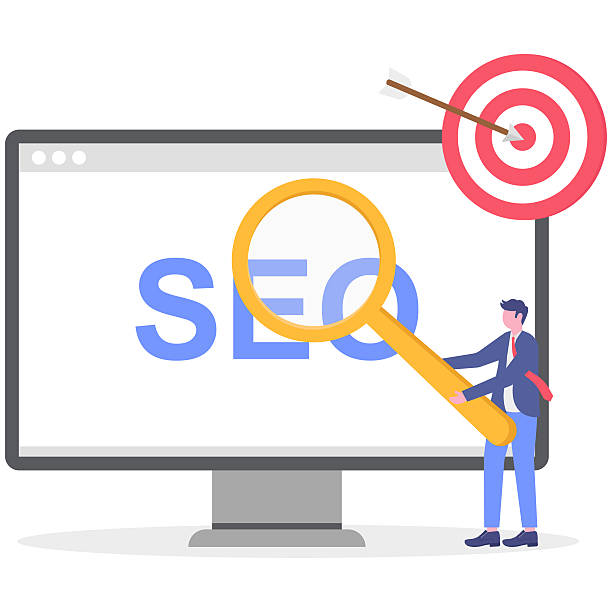
The URL structure, or web address, is another important aspect of #On-Page SEO that is often overlooked.
An optimized and structured URL not only helps search engines better understand the page content but also improves the user experience.
The URL should be readable, short, and descriptive, and include the page’s main #keywords.
Avoiding long URLs with confusing characters or random numbers is an important educational recommendation in this area.
For example, a URL like yoursite.com/on-page-seo-guide is much better than yoursite.com/cat=2&id=123?art=145.
This is a practical guide to improving your site’s structure.
For an optimized URL structure, use hyphens (-) instead of underscores (_) to separate words, as search engines better recognize hyphens as word separators.
Using logical categories in the URL also helps in understanding your site’s hierarchical structure; for example, yoursite.com/category/subcategory/article-title.
This not only helps with On-Page SEO but also allows users to understand their position on the site and navigate it with better insight.
A descriptive URL that quickly conveys the page’s topic is more appealing to users.
From an analytical perspective, clean and meaningful URLs can increase the click-through rate in search results, as users get a better idea of the page content before clicking.
This specialized approach not only helps with ranking but also increases your site’s credibility.
Don’t have a corporate website yet and missing out on online opportunities? With professional corporate website design by Rasaweb,
✅ Double your business credibility
✅ Attract new customers
⚡ Free consultation for your corporate website!
Optimizing Images and Multimedia Files
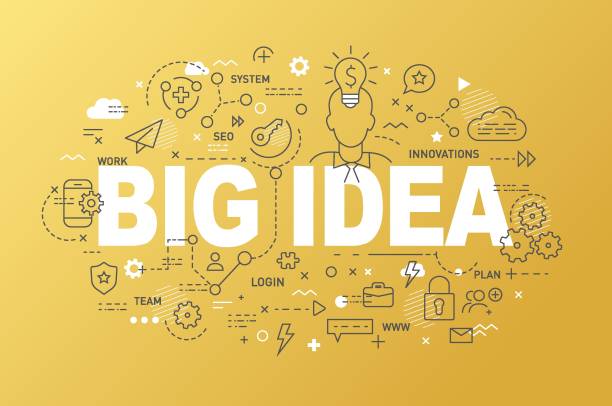
Images and other multimedia files, although not directly text, form an important part of a website’s #On-Page SEO.
Optimizing them not only helps in improving image rankings in Google Image Search but also affects page loading speed and overall user experience.
The first step in image optimization is to use descriptive filenames that include relevant keywords (e.g., on-page-seo-example.jpg).
Avoid numbers or generic names like img_001.jpg.
The most important part of image optimization for SEO is the use of the Alt Tag (Alternate Text).
Alt Text provides a brief and accurate description of the image content and is crucial for search engines and visually impaired users (who use Screen Readers).
This tag should include the main keyword or relevant keywords, but avoid over-stuffing it with keywords (Keyword Stuffing).
Alt Text should be informative, descriptive, and natural.
Reducing image file size without compromising quality is also highly important.
You can use modern formats like WebP and compress images before uploading.
Lazy Loading is also a technique that ensures images are only loaded when the user scrolls to the relevant section, which significantly helps with initial page load speed.
These specialized approaches in On-Page SEO have a significant impact on your site’s overall performance, and from an analytical perspective, improving these factors can reduce bounce rate and increase user engagement time.
Quality Content and Its Impact on On-Page SEO
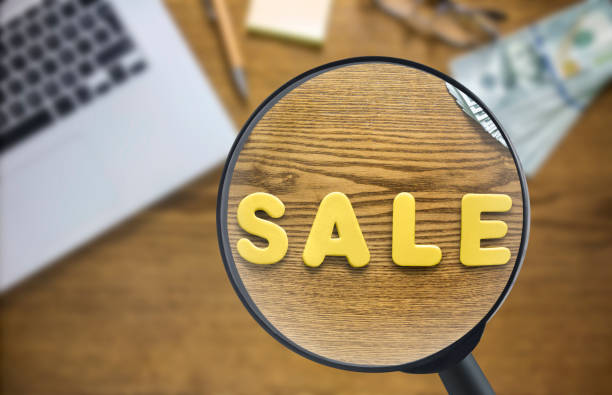
Undoubtedly, #quality content is king and forms the main pillar of any successful #On-Page SEO strategy.
Your content should not only be informative and educational but also presented in a way that is engaging, readable, and practical for users.
Producing valuable content means answering users’ questions, solving their problems, and providing comprehensive and accurate information.
Longer and more in-depth content that is well-researched typically performs better in search results because search engines value comprehensive content.
This includes analytical, explanatory, and even entertaining content.
To improve On-Page SEO through content, readability is crucial.
Use short paragraphs, simple sentences, and subheadings (H2, H3, …) to break up the text.
Lists (bulleted and numbered) and bolding important points also help improve readability.
Your content should be unique, and copying content from other sites should be strictly avoided.
This not only harms your ranking but can also undermine your site’s credibility.
Regularly updating old content with new and relevant information is also a strong tactic in On-Page SEO.
This shows that your site is active and dynamic, and its information is always up-to-date.
Fresh and updated content can send positive signals to search engines.
Furthermore, engaging content that makes the user think and encourages interaction can help increase user dwell time on the page and reduce bounce rate, all of which are positive SEO factors.
Internal Linking and Site Structure Improvement

Internal linking, or #Internal Linking, is the process of creating links from one page to another within the same website.
It’s a critical aspect of #On-Page SEO that is important for three main reasons: it helps search engines understand your site’s structure and discover new pages; it distributes ranking power (Link Equity) across the site; and it helps users easily navigate your site and find relevant information.
A strong internal linking strategy helps your more important pages gain greater authority and rank higher in search results.
This is a practical guide for improving both user experience and SEO simultaneously.
For effective internal linking implementation, use descriptive and keyword-relevant Anchor Text.
Anchor text is the clickable text of a link and provides information to search engines and users about the content of the destination page.
Avoid generic anchor texts like “click here”.
Also, link to pages that are topically relevant to the current page.
Creating Silos or topical clusters, by linking related pages together, can show search engines that your site has expertise in a particular area.
This specialized optimization not only improves On-Page SEO but also creates a logical path for users to navigate your site and gain more information.
XML sitemaps and robots.txt files also help search engines correctly index pages in completing this structure.
From an analytical perspective, strong internal links can help reduce bounce rate and increase user dwell time on the site.
| Anchor Text Type | Example | Description and Usage |
|---|---|---|
| Exact Match | On-Page SEO Tutorial | Exactly the target keyword of the destination page. Should be used cautiously and sparingly. |
| Partial Match | Comprehensive On-Page SEO Guide | Includes the keyword along with additional words. Most common and natural type. |
| Branded | Agency X Blog | Includes brand or site name. For linking to homepage or “About Us” page. |
| Naked URL | https://example.com/ | Using the URL itself as the link text. Less common in body text. |
| Generic | Click here | Generic and non-descriptive texts. This type should be avoided. |
Website Loading Speed and Core Web Vitals

Website loading speed is a crucial factor in #On-Page SEO and user experience.
Search engines, especially Google, prefer fast websites because users have a better experience with them.
A slow site can lead to a high bounce rate and a drop in search rankings.
Google recently introduced new metrics called Core Web Vitals that directly impact ranking.
These metrics include LCP (Largest Contentful Paint), FID (First Input Delay), and CLS (Cumulative Layout Shift).
LCP measures the time it takes for the largest content element on the page to load; FID indicates the time it takes for the site to respond to the first user interaction; and CLS assesses the visual stability of the page.
To improve loading speed and Core Web Vitals, there are several specialized and explanatory solutions.
Compressing images and CSS/JavaScript files, utilizing browser caching, and leveraging a CDN (Content Delivery Network) are among the most important.
Removing redundant and unnecessary code, optimizing fonts, and ensuring website responsiveness also help improve speed.
From an analytical perspective, tools like Google PageSpeed Insights and Lighthouse can provide precise insights into your site’s performance and offer practical guidance for improvement.
These tools identify your site’s weaknesses and suggest necessary solutions.
Improving these technical factors not only helps with On-Page SEO but also directly impacts user satisfaction and ultimately converts visitors into customers.
A fast site is not only attractive to search engines but also provides an enjoyable and seamless experience for the user.
Did you know that your company’s website is the first point of contact for 75% of potential customers?
Your website is the face of your brand. With Rasaweb‘s corporate website design services, create an online presence that earns customer trust.
✅ Create a professional and lasting image for your brand
✅ Attract target customers and increase online credibility
⚡ Get free consultation from Rasaweb experts!
Mobile-First Indexing and Website Responsiveness

In today’s world, where mobile phone usage for internet access is increasing, the concept of #Mobile-First Indexing has become one of the most important considerations in #On-Page SEO.
Google has announced that it considers the mobile version of a site as the primary version for indexing and ranking websites.
This means that if your site is not optimized for mobile, even if its desktop version is excellent, it might perform poorly in search results.
Responsiveness of a website means that your site’s design should be able to automatically adapt to different screen sizes (mobile, tablet, desktop) without disrupting content or user experience.
This is a fundamental guide to ensuring your site’s visibility in mobile searches.
To ensure your site is ready for Mobile-First Indexing, first use Google’s Mobile-Friendly Test tool to check if your site is responsive.
Ensure that all content, images, and videos available on your desktop version are also accessible and viewable on the mobile version.
Loading speed on mobile becomes doubly important due to bandwidth and hardware limitations.
Touch optimization for clickable elements and ensuring sufficient space between links are other specialized recommendations.
Engaging content on mobile must load quickly so you don’t lose the user.
From an analytical perspective, mobile-friendly websites have lower bounce rates and longer user session durations, which are positive SEO signals.
Investing in responsive design is a critical step in improving On-Page SEO and providing a seamless user experience across all devices.
This is an important educational principle for every webmaster.
Monitoring and On-Page SEO Analysis Tools
![]()
To ensure the effectiveness of your #On-Page SEO strategy, continuous monitoring and the use of analytical tools are essential.
These tools help you track your website’s performance, identify potential issues, and discover new opportunities for improvement.
Google Search Console and Google Analytics are two free and powerful tools that every webmaster should use.
Search Console provides information on how your site is indexed by Google, crawl errors, keywords your site is visible for, and security issues.
This tool is invaluable for On-Page SEO and discovering technical site errors.
Google Analytics, on the other hand, provides detailed data on user behavior on your site; including the number of visitors, time spent on the site, popular pages, bounce rate, and user navigation paths.
Combining the information from these two tools gives you a comprehensive and analytical view of which parts of your On-Page SEO are performing well and which ones need further optimization.
In addition, paid tools like Ahrefs, Semrush, and Moz offer more advanced features for keyword research, competitor analysis, and backlink analysis that can be used for more specialized analyses.
Continuous monitoring allows you to quickly react to algorithm changes or technical issues.
This is a vital guide to maintaining and improving your site’s ranking over time.
This process is educational and ongoing, helping you always stay a step ahead.
Frequently Asked Questions
| Question | Answer |
|---|---|
| What is a Meta Title and why is it important in On-Page SEO? | The meta title is the most important element of On-Page SEO, displayed at the top of the browser tab and in search results. It helps search engines and users understand the main topic of the page and should include the primary keyword. |
| What role does the Meta Description play in On-Page SEO? | The meta description is a short summary of the page content displayed below the title in search results. Although it does not directly affect ranking, its attractiveness can increase the Click-Through Rate (CTR). |
| How should keywords be used in page content? | Keywords should be used naturally and relevantly in strategic locations such as the title, headings, first paragraph, and body text. Avoid excessive keyword stuffing. |
| What is the importance of high-quality and comprehensive content in On-Page SEO? | High-quality, unique, informative, and comprehensive content that addresses user needs is of great importance. Search engines give higher rankings to content that provides real value. |
| What is the use of heading tags (H1-H6) in On-Page SEO structure? | Heading tags (H1, H2, H3, etc.) are used to structure content and indicate the importance of different sections. H1 is the main title of the page, and each page should only have one H1. Other tags are used for subheadings. |
| How do we optimize images to improve On-Page SEO? | To optimize images, use descriptive Alt Text that includes relevant keywords, reduce the image file size without compromising quality, and use meaningful and relevant filenames. |
| What features does a friendly URL have for On-Page SEO? | A friendly URL should be short, readable, descriptive, include main keywords, and be free of extra characters. The URL structure should be hierarchical and logical so that it is understandable for both users and search engines. |
| How does Internal Linking help On-Page SEO? | Internal linking, by connecting related pages, helps users and search engine crawlers better understand the site’s structure, transfer page authority, and increase user time on the site. |
| What is the impact of page loading speed on On-Page SEO? | High loading speed is crucial for both user experience and SEO ranking. Slower pages might be overlooked by search engines and lead to an increased Bounce Rate. |
| Why is Mobile-Friendliness highly important in On-Page SEO? | Given the increasing number of searches via mobile devices, having a responsive and mobile-friendly site is crucial for user experience and ranking in search results (Google’s Mobile-First Indexing). |
And other services by Rasaweb Advertising Agency in the field of advertising
Smart Brand Identity: A novel service to enhance campaign management through user experience customization.
Smart Marketplace: A fast and efficient solution to increase sales by focusing on Google Ads management.
Smart Digital Advertising: Designed for businesses seeking online growth through attractive user interface design.
Smart Data Analysis: A combination of creativity and technology to boost sales by utilizing real data.
Smart Marketing Automation: A dedicated service for growth in customer acquisition based on marketing automation.
And over a hundred other services in the fields of internet advertising, advertising consultation, and organizational solutions
Internet Advertising | Advertising Strategy | Advertorials
Resources
- Comprehensive On-Page SEO Guide on Seonama
- Introduction to Keyword Research Tools on Rocket
- Technical SEO Checklist on IranServer
- The Relationship Between Content Marketing and SEO on MizbanFa
? With Rasaweb Afarin, your business thrives powerfully in the digital world. From responsive website design to search engine optimization, we are by your side to ensure a powerful and lasting online presence.
📍 Tehran, Mirdamad Street, next to Bank Markazi, Kazeroun Jonoubi Alley, Ramin Alley, No. 6

